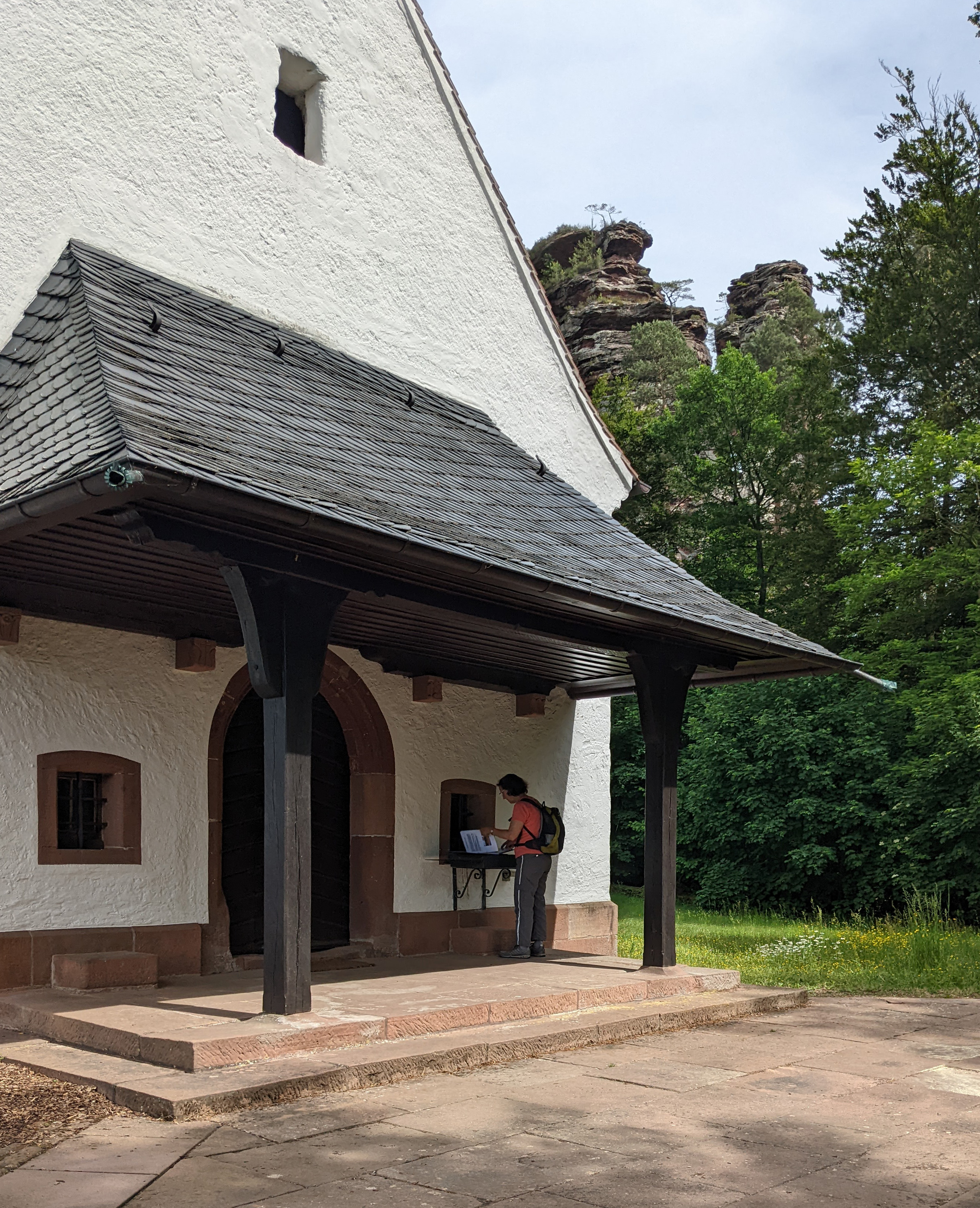Hochstein (rocks) on:
[Wikipedia]
[Google]
[Amazon]

 The Hochstein, near the little southwest Palatine town of
The Hochstein, near the little southwest Palatine town of
 The Hochstein, near the little southwest Palatine town of
The Hochstein, near the little southwest Palatine town of Dahn
Dahn is a municipality in the Südwestpfalz district, in Rhineland-Palatinate, Germany. It is situated in the Palatinate Forest, approximately 15 km southeast of Pirmasens, and 25 km west of Landau. It is part of the ''Verbandsgemeind ...
in southwest Germany, is a rock formation
A rock formation is an isolated, scenic, or spectacular surface rock outcrop. Rock formations are usually the result of weathering and erosion sculpting the existing rock. The term ''rock formation'' can also refer to specific sediment ...
that is very popular with sports climbers and walkers.
Structure and location
The Hochstein (345 m) belongs to the manybunter sandstone
The Buntsandstein (German for ''coloured'' or ''colourful sandstone'') or Bunter sandstone is a lithostratigraphic and allostratigraphic unit (a sequence of rock strata) in the subsurface of large parts of west and central Europe. The Buntsands ...
rock formations that are typical of the Wasgau
The Wasgau (german: Wasgau, french: Vasgovie) is a Franco-German hill range in the German state of Rhineland-Palatinate and the French departments of Bas-Rhin and Moselle. It is formed from the southern part of the Palatine Forest and the north ...
, a region that covers the southern part of the Palatine Forest and the northern part of the Vosges
The Vosges ( , ; german: Vogesen ; Franconian and gsw, Vogese) are a range of low mountains in Eastern France, near its border with Germany. Together with the Palatine Forest to the north on the German side of the border, they form a single ...
. Because the region of Dahn is especially rich in such landforms, it is known as the Dahn Rock Country (''Dahner Felsenland
The Dahner Felsenland, also referred to as the Dahn Rockland, is a landscape in the county of Südwestpfalz in the German federal state of Rhineland-Palatinate. It is located in the middle section of the Wasgau, which in turn forms the southern ...
''). The Hochstein - like the other rock outcrops of the region - is made of a harder rock that has partly withstood erosion
Erosion is the action of surface processes (such as water flow or wind) that removes soil, rock, or dissolved material from one location on the Earth's crust, and then transports it to another location where it is deposited. Erosion is distin ...
over the centuries. The entire massif runs for 1½ km east of Dahn across the Wieslauter
The Lauter (in its upper course also: ''Wieslauter'') is a river in Germany and France.
The Lauter is a left tributary of the Rhine. Its length is , of which 39 km is in France and on the France–Germany border. It is formed by the confluence of ...
stream and is heavily subdivided.
Especially striking is the ''Hochsteinnadel'' ("Hochstein Needle") at the western tip of the massif, near St. Michael's Chapel. Next is the ''Gratturm'', followed by the main ''Hochsteingrat'' ridge itself. From here there are outlying spurs running northeast and south, of which the ''Haferfels'' stands out.
Flora
The remains of ancientjuniper
Junipers are coniferous trees and shrubs in the genus ''Juniperus'' () of the cypress family Cupressaceae. Depending on the taxonomy, between 50 and 67 species of junipers are widely distributed throughout the Northern Hemisphere, from the Arcti ...
bushes are especially valuable, as are luminescent mosses in small corners of the ''Hochsteingrat''.
Features
In some places theleachate
A leachate is any liquid that, in the course of passing through matter, extracts soluble or suspended solids, or any other component of the material through which it has passed.
Leachate is a widely used term in the environmental sciences wher ...
has created especially delicate weathering patterns.
Towards the end of the Second World War
World War II or the Second World War, often abbreviated as WWII or WW2, was a world war that lasted from 1939 to 1945. It involved the vast majority of the world's countries—including all of the great powers—forming two opposin ...
, families in Dahn sought refuge for a long time under overhanging rocks. Traces of their emergency shelter are still visible.
At the foot of the Hochstein is Dahn Cemetery which, with its 2,400 graves, is one of the largest war cemeteries in Germany.
External links
{{Coord, 49.1454, 7.7915, type:landmark_region:DE-RP, display=title Natural monuments in Rhineland-Palatinate Geography of the Palatinate (region) Climbing areas of Germany Dahn Rock formations of Rhineland-Palatinate